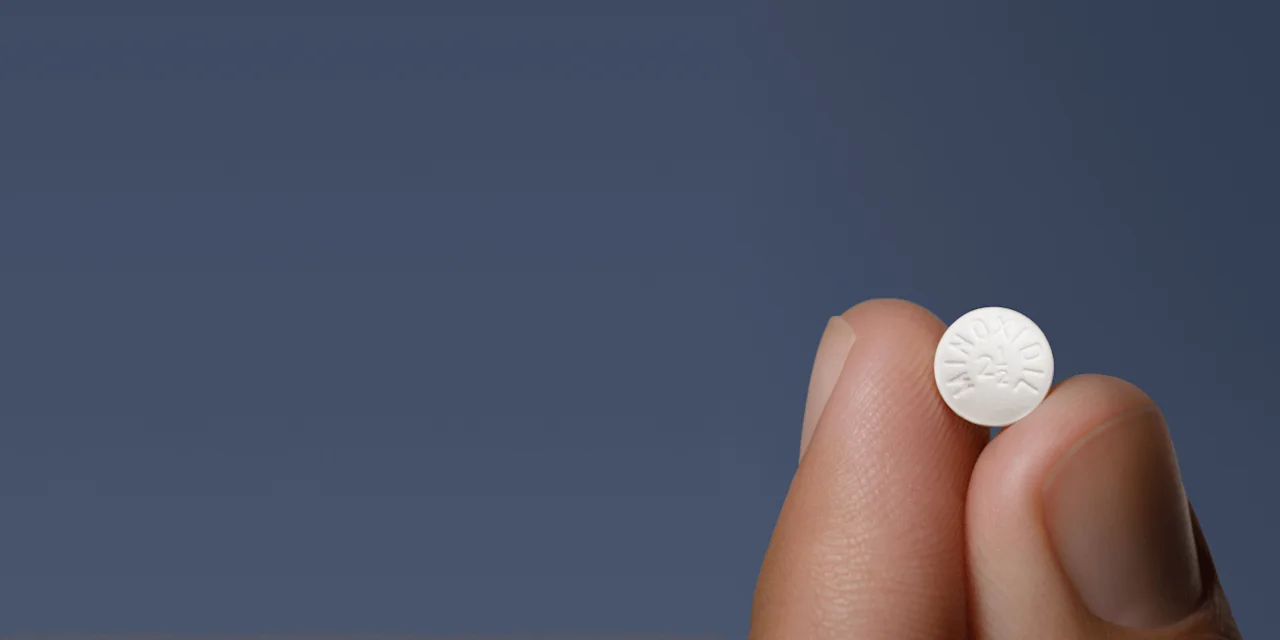Key takeaways
Regular scalp massage may promote hair growth when performed for at least six months, but this is based on limited research.
Scalp massage can be done on dry or wet hair in the shower, and it can be performed using your own hands, with or without essential oils, or with a scalp massaging tool.
In addition to scalp massage, topical and oral medicines, as well as lifestyle habits like nutrition and stress management can promote hair growth and preserve your strands.
Here's what we'll cover
Here's what we'll cover
Key takeaways
Regular scalp massage may promote hair growth when performed for at least six months, but this is based on limited research.
Scalp massage can be done on dry or wet hair in the shower, and it can be performed using your own hands, with or without essential oils, or with a scalp massaging tool.
In addition to scalp massage, topical and oral medicines, as well as lifestyle habits like nutrition and stress management can promote hair growth and preserve your strands.
Getting a scalp massage certainly feels good, and it can turn the dial down on your stress. But aside from a spa-like experience, does a scalp massage for hair growth really work?
Some research suggests that a scalp massage may help hair feel or appear thicker, and at the very least, having one can help you relax. Here’s what you need to know about the benefits of scalp massage for hair growth, including how to do it on your own, as well as other proven methods for improving hair health and hair loss.
How can a scalp massage help with hair growth?
Scalp massage is believed to encourage hair growth for a couple of reasons. For starters, it can cause an increase in blood flow to hair follicles. Blood flow is responsible for bringing adequate oxygen and nutrients that can nourish follicles and promote proper hair growth. So, it makes sense that a lack of blood supply to hair follicles may play a role in hair loss.
Another reason scalp massage may help with hair growth? Mechanical stretching when your fingertips move the skin on your scalp, creating a pulling effect on follicles. This movement can stimulate hair papilla cells, cells at the bottom of hair follicles that play a role in hair growth.
That said, the research on scalp massage for hair growth is limited. One study evaluated the effect of scalp massage on just 9 healthy men who used a scalp massage device for 4 minutes per day for 24 weeks. The results indicated an increase in hair thickness. However, this was a very small study done in vitro, meaning more research on humans is needed.
A survey on 340 people with androgenic alopecia (aka male pattern baldness or female hair loss) who used scalp massage for 11–20 minutes per day for at least 10 months found that more than half of the participants experienced an end to or stabilization of their hair loss and regrowth. It’s possible these results are due to the stretching that occurs during a scalp massage; researchers hypothesized that this can encourage an increase in growth factors that can help sprout strands.
Other scalp massage benefits
There’s limited evidence supporting scalp massage’s direct impact on hair growth. But the treatment has been shown to have other positive effects, and many of these could support strong, healthy strands.
Reduced stress
Scalp massage can help lower stress hormones, such as norepinephrine and cortisol, as well as decrease blood pressure and heart rate. In a small 2016 study of female participants, those who received either a 15- or 25-minute scalp massage twice a week (vs. those in the control group) experienced a decrease in the aforementioned biomarkers of stress. Individuals in the 25-minute cohort also had reduced levels of epinephrine (another stress hormone), suggesting that a longer treatment may have an even stronger relaxing effect.
Stress is one of the most common causes of hair loss, and it’s a factor in nearly 30% of cases of sudden hair shedding (also known as telogen effluvium). So, a reduction in stress—such as by way of a scalp massage—can potentially reduce the chances of this type of hair loss.
Improved scalp health
As mentioned above, scalp massage can increase blood flow in and to your scalp. This was also evidenced in the above 2016 study, which found that the treatment improved circulation in the scalp. Researchers reasoned that scalp massage can activate the parasympathetic nervous system, which helps relax muscles and dilate blood vessels; this, in turn, can promote better blood flow and improve circulation in the body—including to your scalp. Increased circulation ensures delivery of nutrients and oxygen to the follicles, which are key for overall scalp wellbeing and for hair growth.
It’s also possible that scalp massage can help loosen and remove dead skin cells as well as product build-up. Similar to exfoliating your face or body, this process can create a healthier environment on your head that’s ideal for hair growth.
Simply put, a healthy scalp—which a scalp massage can help achieve—is linked to better hair quality and growth.
How to massage your scalp for hair growth
There are few different ways to massage your hair for hair growth. The method you choose will likely depend on your preferences (think: tools or no tools) and availability (some techniques may take longer than others).
Traditional scalp massage
Traditional scalp massage involves just your hands, and it can be done on dry hair.
Place the finger pads of both hands—i.e. your fingertips—high up on your scalp, near your forehead.
Using gentle pressure, move your fingertips in small circles.
Gradually work your hands across your scalp, so that you massage throughout.
In addition to small circles, you can also employ other movements. For example, you might gently press your fingertips together to “pinch” your scalp or open your fingertips while applying pressure in a “stretching” motion. Applying pressure with your knuckles or palms may also feel nice. Choose what works (read: feels best) for you.
Scalp massage in the shower
Pressed for time? Try doing a scalp massage for hair growth in the shower. Keep in mind, though, that wet hair is more fragile and prone to breakage compared to dry hair. So, you might want to ease up on the pressure when doing this technique.
After wetting your hair, apply shampoo to your scalp.
Follow the same steps as those outlined above: Applying gentle pressure, move your fingertips in small circles and work shampoo into a lather. Make sure to continue these circular motions all over your scalp from your forehead, down to your temples, and to the nape of your neck.
Rinse and condition.
Scalp massage with essential oils
Incorporating certain essential oils into your scalp massage may take your treatment to the next level. Peppermint oil, for example, has been shown to enhance blood flow, helping to deliver even more nutrients and oxygen to the follicles for hair growth. Meanwhile, lavender oil can reduce stress, which may indirectly support hair growth. What’s more, animal studies have found lavender and peppermint essential oils to stimulate hair growth in mice.
That being said, research has studied rosemary, eucalyptus, juniper, thyme, evening primrose, and atlas cedar oils to potentially aid in hair growth as well.
Choose your essential oil or blend. Make sure to dilute your selection with a carrier oil, such as jojoba, grape seed, or almond oils; doing this can help prevent irritation as essential oils by themselves can be highly concentrated.
Proceed with the massage steps described above.
Shampoo and rinse your hair as needed.
Scalp massage with tools or brushes
Scalp massage tools are easy to find and range in style, from those that resemble traditional combs and brushes to others that are more gadget-y with silicone bristles. They may be manual, requiring hand operation, or electric, powered by batteries. In general, however, scalp massage tools tend to do most of the work for you. In other words, their main perk is preventing your fingers from getting too tired.
How often should you do a scalp massage for hair growth?
It’s not clear what the optimal time to massage your scalp for hair growth is, though
Studies have shown positive results from scalp massages ranging in length, from 4–20 minutes, and in frequency, from once a day to multiple times a week. Dedicate the amount of time that you can perform scalp massage consistently. Research suggests performing scalp massage daily—remember, though, you get out what you put in.
Alternatives to scalp massage for hair growth
If you think that your hair is thinning or you’re struggling with hair loss, it’s best to consult a healthcare provider. There are many underlying causes of hair loss, and your provider is best equipped to determine what might be to blame for your shedding strands and how to best address them. That being said, there are a variety of different hair loss treatments (that can be done in addition to scalp massage) that your provider may suggest. Here, a bit more about each of those options:
Topical medication and treatments
Topical medications have been shown to help prevent hair loss and/or regrow hair. One of those is finasteride, which helps inhibit an enzyme that converts testosterone to dihydrotestosterone (DHT) in the hair follicle. Higher levels of DHT in follicles are associated with androgenic alopecia. Topical minoxidil is another medication that is believed to work a different way, by increasing blood flow to follicles to promote hair growth.
Although you can purchase topical minoxidil over the counter, these two ingredients often perform better together, and you can find them both, along with tretinoin to boost absorption of the active ingredients, in Ro’s 3-in-1 Topical Spray.
Finasteride Important Safety Information: Read more about serious warnings and safety info.
Oral medications
Oral finasteride and oral minoxidil are also available as once-daily medications. It’s important to note, though, that finasteride is a treatment for male pattern hair loss only. Both of these drugs require a prescription from a healthcare provider and are associated with their own risks and benefits.
Oral Minoxidil Important Safety Information: Read more about serious warnings and safety info.
Nutritious diet
Eating a nutritious, balanced diet is not only key for your overall health, but the foods you eat (and don’t eat) can also contribute to the strength and number of your strands. So, it might not be surprising to learn that nutritional deficiencies can be a common cause of hair loss. Whether you’re concerned about hair loss or just want to maintain a hair-friendly diet, make sure to eat foods that contain the following nutrients:
Iron
Zinc
Niacin (vitamin B3) and biotin (vitamin B7)
Selenium
Vitamins A and D
Unsaturated fats
Protein
Antioxidants
Some of these nutrients, such as iron and zinc, are plentiful in animal foods, particularly meat. If you are a vegetarian or vegan or have a limited diet, you may want to talk to your healthcare provider about testing for nutrient deficiencies.
Preventative steps
Concerned about hair loss? Here’s what you can do to hold onto your hair:
Don’t smoke–or take steps to quit if you do. Smoking is associated with a higher risk of developing male pattern baldness.
Manage stress to the best of your abilities. Stress is impossible to avoid, but developing stress management strategies can help you hold onto your hair. Cortisol, a stress hormone, can change the function of hair follicles, leading to temporary hair shedding called telogen effluvium.
Avoid tight hairstyles, which pull on the hair roots, leading to a type of hair loss called traction alopecia.
Talk to your healthcare provider. Conditions such as thyroid disorders and autoimmune disease can cause hair loss. Treating the underlying problem is key for hair regrowth.
Bottom line
Limited evidence suggests that scalp massage may be helpful for thickening and possibly growing hair. However, there do not seem to be many, if any, downsides to scalp massage, and it can be a self-care measure that can help you decrease stress. If you’re experiencing hair loss, other treatments, such as topical or oral finasteride and minoxidil and lifestyle changes, can be effective for slowing hair loss and encouraging hair regrowth. Talk to a healthcare provider about your hair loss concerns to get the right treatment for you.
DISCLAIMER
If you have any medical questions or concerns, please talk to your healthcare provider. The articles on Health Guide are underpinned by peer-reviewed research and information drawn from medical societies and governmental agencies. However, they are not a substitute for professional medical advice, diagnosis, or treatment.
English, R. S., Jr. & Barazesh, J. M. (2019). Self-Assessments of Standardized Scalp Massages for Androgenic Alopecia: Survey Results. Dermatology and Therapy, 9(1), 167–178. doi: 10.1007/s13555-019-0281-6. Retrieved from https://www.ncbi.nlm.nih.gov/pmc/articles/PMC6380978/
Guo, E. L. & Katta, R. (2017). Diet and hair loss: effects of nutrient deficiency and supplement use. Dermatology Practical & Conceptual, 7(1), 1–10. doi: 10.5826/dpc.0701a01. Retrieved from https://www.ncbi.nlm.nih.gov/pmc/articles/PMC5315033/
Gupta, A. K., Bamimore, M. A., & Talukder, M. (2024). A meta-analysis study on the association between smoking and male pattern hair loss. Journal of Cosmetic Dermatology, 23(4), 1446–1451. doi: 10.1111/jocd.16132. Retrieved from https://onlinelibrary.wiley.com/doi/full/10.1111/jocd.16132
Hussein, R. S., Atia, T., & Bin Dayel, S. (2023). Impact of Thyroid Dysfunction on Hair Disorders. Cureus, 15(8), e43266. doi: 10.7759/cureus.43266. Retrieved from https://www.ncbi.nlm.nih.gov/pmc/articles/PMC10492440/
Kim, I. H., Kim, T. Y., & Ko, Y. W. (2016). The effect of a scalp massage on stress hormone, blood pressure, and heart rate of healthy female. Journal of Physical Therapy Science, 28(10), 2703–2707. doi: 10.1589/jpts.28.2703. Retrieved from https://www.ncbi.nlm.nih.gov/pmc/articles/PMC5088109/
Koyama, T., Kobayashi, K., Hama, T., et al. (2016). Standardized Scalp Massage Results in Increased Hair Thickness by Inducing Stretching Forces to Dermal Papilla Cells in the Subcutaneous Tissue. Eplasty, 16, e8. Retrieved from https://www.ncbi.nlm.nih.gov/pmc/articles/PMC4740347/
Lee, B. H., Lee, J. S., & Kim, Y. C. (2016). Hair Growth-Promoting Effects of Lavender Oil in C57BL/6 Mice. Toxicological Research, 32(2), 103–108. doi: 10.5487/TR.2016.32.2.103. Retrieved from https://www.ncbi.nlm.nih.gov/pmc/articles/PMC4843973/
Lewallen, R., Francis, S., Fisher, B., et al. (2015). Hair care practices and structural evaluation of scalp and hair shaft parameters in African American and Caucasian women. Journal of Cosmetic Dermatology, 14(3), 216–223. doi: 10.1111/jocd.12157. Retrieved from https://onlinelibrary.wiley.com/doi/10.1111/jocd.12157
Malkud, S. (2015). Telogen Effluvium: A Review. Journal of Clinical and Diagnostic Research : JCDR, 9(9), WE01–WE3. doi: 10.7860/JCDR/2015/15219.6492. Retrieved from https://www.ncbi.nlm.nih.gov/pmc/articles/PMC4606321/
Matsuzaki, T. & Yoshizato, K. (1998). Role of hair papilla cells on induction and regeneration processes of hair follicles. Wound repair and Regeneration : Official Publication of the Wound Healing Society [and] the European Tissue Repair Society, 6(6), 524–530. doi: 10.1046/j.1524-475x.1998.60605.x. Retrieved from https://pubmed.ncbi.nlm.nih.gov/9893172/
Murphrey, M. B., Agarwal, S., & Zito, P. M. (2023). Anatomy, Hair. StatPearls. Retrieved from https://www.ncbi.nlm.nih.gov/books/NBK513312/
Natarelli, N., Gahoonia, N., & Sivamani, R. K. (2023). Integrative and Mechanistic Approach to the Hair Growth Cycle and Hair Loss. Journal of Clinical Medicine, 12(3), 893. doi: 10.3390/jcm12030893. Retrieved from https://www.mdpi.com/2077-0383/12/3/893
Oh, J. Y., Park, M. A., & Kim, Y. C. (2014). Peppermint Oil Promotes Hair Growth without Toxic Signs. Toxicological Research, 30(4), 297–304. doi: 10.5487/TR.2014.30.4.297. Retrieved from https://www.ncbi.nlm.nih.gov/pmc/articles/PMC4289931/
Piraccini, B. M., Blume-Peytavi, U., Scarci, F., et al. (2022). Efficacy and safety of topical finasteride spray solution for male androgenetic alopecia: a phase III, randomized, controlled clinical trial. Journal of the European Academy of Dermatology and Venereology : JEADV, 36(2), 286–294. doi: 10.1111/jdv.17738. Retrieved from https://www.ncbi.nlm.nih.gov/pmc/articles/PMC9297965/
Pulickal, J. K. & Kaliyadan, F. (2023). Traction Alopecia. StatPearls. Retrieved from https://www.ncbi.nlm.nih.gov/books/NBK470434/
Rodríguez-Tamez, G., Herz-Ruelas, M. E., Gómez-Flores, M., et al. (2023). Hair Disorders in Autoimmune Diseases. Skin Appendage Disorders, 9(2), 84–93. doi: 10.1159/000527933. Retrieved from https://karger.com/sad/article/9/2/84/832301/Hair-Disorders-in-Autoimmune-Diseases
Sinclair, R. D. (2007). Healthy hair: what is it?. The Journal of Investigative Dermatology. Symposium Proceedings, 12(2), 2–5. doi: 10.1038/sj.jidsymp.5650046. Retrieved from https://pubmed.ncbi.nlm.nih.gov/18004288/
Suchonwanit, P., Srisuwanwattana, P., Chalermroj, N., & Khunkhet, S. (2018). A randomized, double-blind controlled study of the efficacy and safety of topical solution of 0.25% finasteride admixed with 3% minoxidil vs. 3% minoxidil solution in the treatment of male androgenetic alopecia. Journal of the European Academy of Dermatology and Venereology : JEADV, 32(12), 2257–2263. doi: 10.1111/jdv.15171. Retrieved from https://pubmed.ncbi.nlm.nih.gov/29972712/
Thom, E. (2016). Stress and the Hair Growth Cycle: Cortisol-Induced Hair Growth Disruption. Journal of Drugs in Dermatology : JDD, 15(8), 1001–1004. Retrieved from https://jddonline.com/articles/stress-and-the-hair-growth-cycle-cortisol-induced-hair-growth-disruption-S1545961616P1001X/
Tkachenko, E., Okhovat, J. P., Manjaly, P., et al. (2023). Complementary and alternative medicine for alopecia areata: A systematic review. Journal of the American Academy of Dermatology, 88(1), 131–143. doi: 10.1016/j.jaad.2019.12.027. Retrieved from https://pubmed.ncbi.nlm.nih.gov/31870916/
Trüeb, R. M., Henry, J. P., Davis, M. G., & Schwartz, J. R. (2018). Scalp Condition Impacts Hair Growth and Retention via Oxidative Stress. International Journal of Trichology, 10(6), 262–270. doi: 10.4103/ijt.ijt_57_18. Retrieved from https://www.ncbi.nlm.nih.gov/pmc/articles/PMC6369642/












